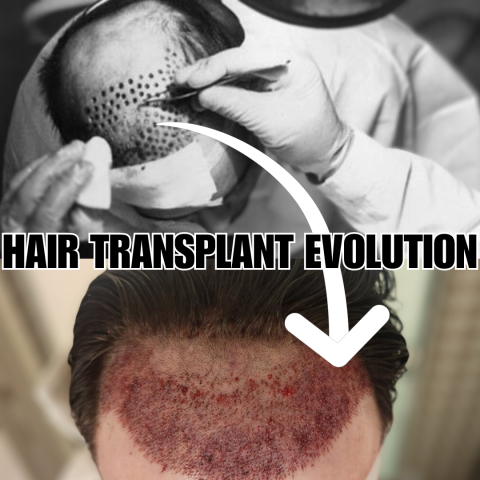The history of hair transplantation is a fascinating journey that has evolved over the century, with advancements in medical and surgical techniques. Here's an overview of the critical milestones in the history of hair transplantation:
History of hair transplant surgery
1930s: The modern history of hair transplantation began in the 1930s when Dr. Okuda, a Japanese dermatologist, performed the first successful hair transplantation using small grafts. His technique, known as punch grafting, involved removing small circular grafts of hair-bearing scalp and transplanting them to areas with hair loss.
1950s-1960s: The field of hair transplantation gained momentum in the mid-20th century. Dr. Norman Orentreich, an American dermatologist, introduced the concept of donor dominance, which laid the foundation for modern hair transplant techniques. In 1952, he performed a groundbreaking hair transplant using punch grafts.
1980s: The 1980s saw significant improvements in hair transplantation techniques. Surgeons began using smaller grafts, known as mini-grafts and micro-grafts, to achieve a more natural appearance. These smaller grafts contained fewer hairs and allowed for more precise placement.
1990s: The 1990s brought about the development of the follicular unit transplant (FUT) technique, also known as strip harvesting. In FUT, a strip of hair-bearing scalp is removed from the donor area and dissected into individual follicular units for transplantation. This method reduced scarring and improved results.
Late 1990s to Present: In the late 1990s and into the 21st century, follicular unit extraction (FUE) emerged as the new gold standard compared to FUT. FUE involves the extraction of individual follicular units directly from the donor area, without the need for a strip of skin. This technique is less invasive and leaves minimal scarring. FUE allows surgeons to extract and cherry-pick the best grafts.
Advancements and Accountability
Technological Advancements: Advances in technology have greatly improved the precision and success of hair transplantation. Robotic-assisted hair transplantation and automated graft counting have become common, allowing for more efficient and accurate procedures.
Platelet-rich plasma (PRP) and Stem Cell Therapies: In recent years, PRP and stem cell therapies have been incorporated into hair transplantation to enhance the success of the procedure and promote hair regrowth.
Growing Popularity: Hair transplantation has gained popularity worldwide as the best solution for hair loss, particularly male and female pattern baldness. It is now considered a safe and effective way to restore a more natural-looking head of hair.
The Hair Restoration Network (HRN) is a prominent online community and resource for individuals seeking information and support related to hair restoration and hair transplantation. While HRN is not a direct contributor to the hair transplant industry, it has significantly shaped it in several ways.
How The Hair Restoration Network Changed The Industry
Surgeon Reviews and Recommendations: HRN has an extensive database of hair transplant surgeons and clinics, along with patient reviews and recommendations. This resource helps patients find reputable surgeons with a track record of producing successful results. The reviews and recommendations foster transparency and accountability within the industry, encouraging surgeons to maintain high standards.
Encouraging Best Practices: The HRN community encourages best practices in hair transplantation. Surgeons participating in the HRN forums often engage with patients, answer questions, and provide valuable insights. This direct interaction fosters trust and accountability, which benefits the entire industry.
Forum Discussions: HRN's forums allow individuals to ask questions, seek advice, and share their concerns about hair restoration. These discussions often include topics related to new techniques, technologies, and products in the field. As a result, HRN has facilitated the exchange of knowledge, leading to improved methods and practices in the industry.
Raising Awareness: HRN has played a role in raising awareness about the availability and effectiveness of hair transplant procedures. By providing a platform for patients to share their success stories, HRN contributes to reducing the stigma associated with hair loss and adopting hair restoration as a viable solution.
Influencing Industry Standards: The collective experiences and expectations of HRN's community members have influenced industry standards. Surgeons and clinics participating in HRN are often motivated to maintain high quality and ethics, as they know that their reputation within the community can impact their success.
Push for Ethical Practices: HRN has been instrumental in promoting ethical practices within the industry. It has advocated for honest and transparent communication between surgeons and patients, emphasizing informed decision-making and realistic expectations.
While HRN has shaped the hair transplant industry by providing information, support, and accountability, it's important to note that the industry has evolved alongside medical and surgical technological advances. The growth of HRN reflects the increasing demand for hair restoration services and the importance of informed patient choice. As the industry continues to develop, HRN will likely remain a central resource for patients and a driving force for positive changes and improvements in the field of hair transplantation.

